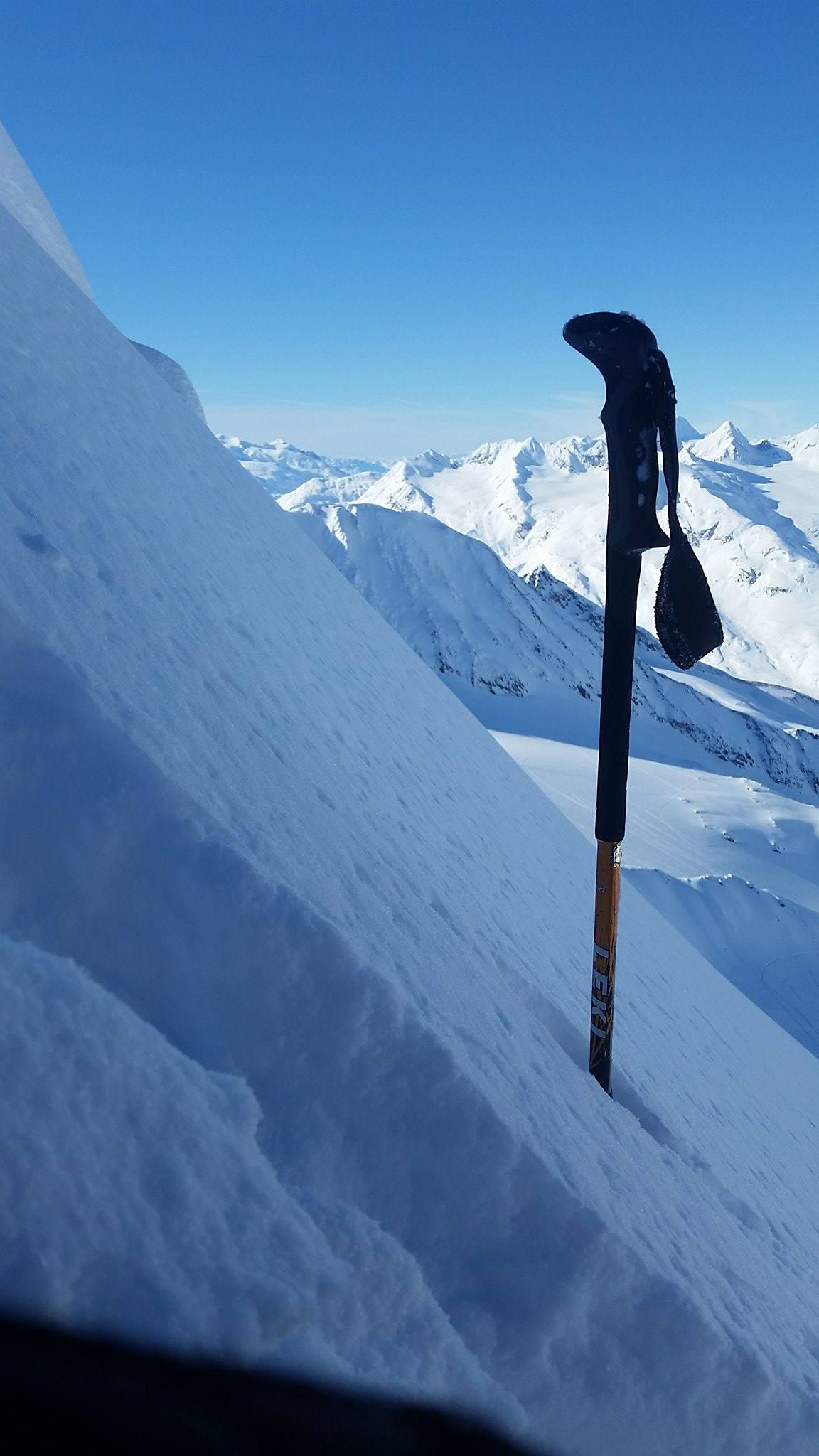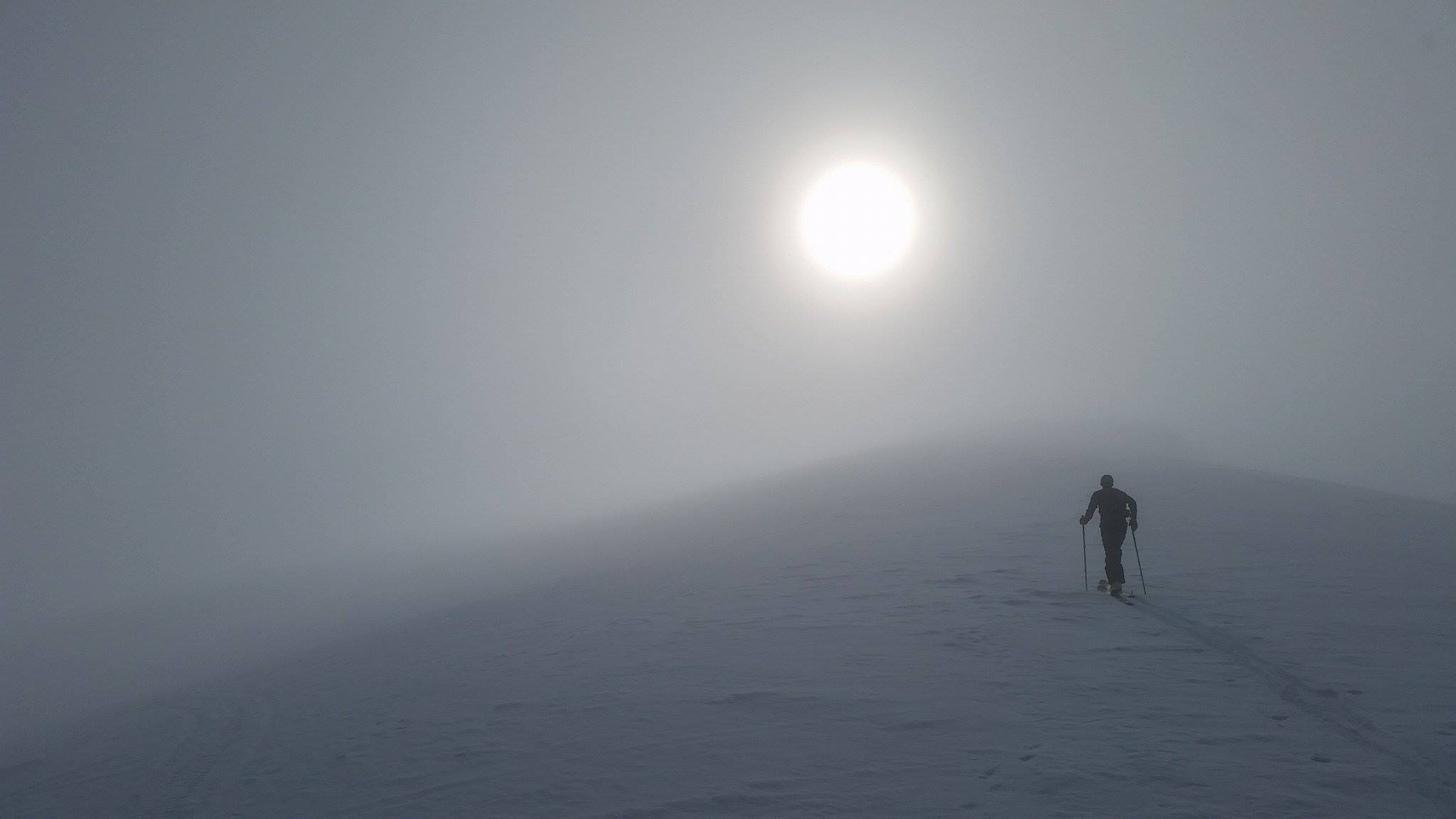 The
ascent can either be a continuation of the approach or an
entirely different aspect of your trip altogether. For
most ventures, the ascent can be done on skins, but
different techniques may need to be used depending on how
steep the slope is. Climbing skins are great for providing
traction, but if the slope is too steep there's only so
much they can do. Just like hiking trails will often
zig-zag up hills, so skin trails do the same. Ascending
the slope at an angle ensures you have sufficient traction
to not slide backwards and is also a more efficient use of
energy. This is also dependent on snow conditions. Soft
powder is, yet again, the best condition for this. The
snow is compressed under the ski to form a horizontal
platform, ensuring the entire ski is making contact with
the snow. If the snow is icy or hard-packed, then only the
edge of the ski can make contact, and this can make it
very difficult to effectively ascend the slope at an
angle.
The
ascent can either be a continuation of the approach or an
entirely different aspect of your trip altogether. For
most ventures, the ascent can be done on skins, but
different techniques may need to be used depending on how
steep the slope is. Climbing skins are great for providing
traction, but if the slope is too steep there's only so
much they can do. Just like hiking trails will often
zig-zag up hills, so skin trails do the same. Ascending
the slope at an angle ensures you have sufficient traction
to not slide backwards and is also a more efficient use of
energy. This is also dependent on snow conditions. Soft
powder is, yet again, the best condition for this. The
snow is compressed under the ski to form a horizontal
platform, ensuring the entire ski is making contact with
the snow. If the snow is icy or hard-packed, then only the
edge of the ski can make contact, and this can make it
very difficult to effectively ascend the slope at an
angle.If you are more of an aggressive skier, you may find yourself ascending slopes that are simply just too steep to use skins on. Some may say that you can skin up anything as long as the snow is deep enough, but there comes a point when it just isn't feasible or safe. In such instances, the only thing to do is strap your skis on your pack and start climbing on foot. This is known as boot-packing, and sometimes kick-stepping, and is just as simple as it sounds. With the right snow conditions this can be done easily enough with just ski gear, but if the snow is too hard you'll need crampons and ice axes, and if it is too soft and deep, well then you may as well just turn around and start your descent at that point. Another concern with boot-packing is that the risk of avalanches is higher on steeper slopes.
